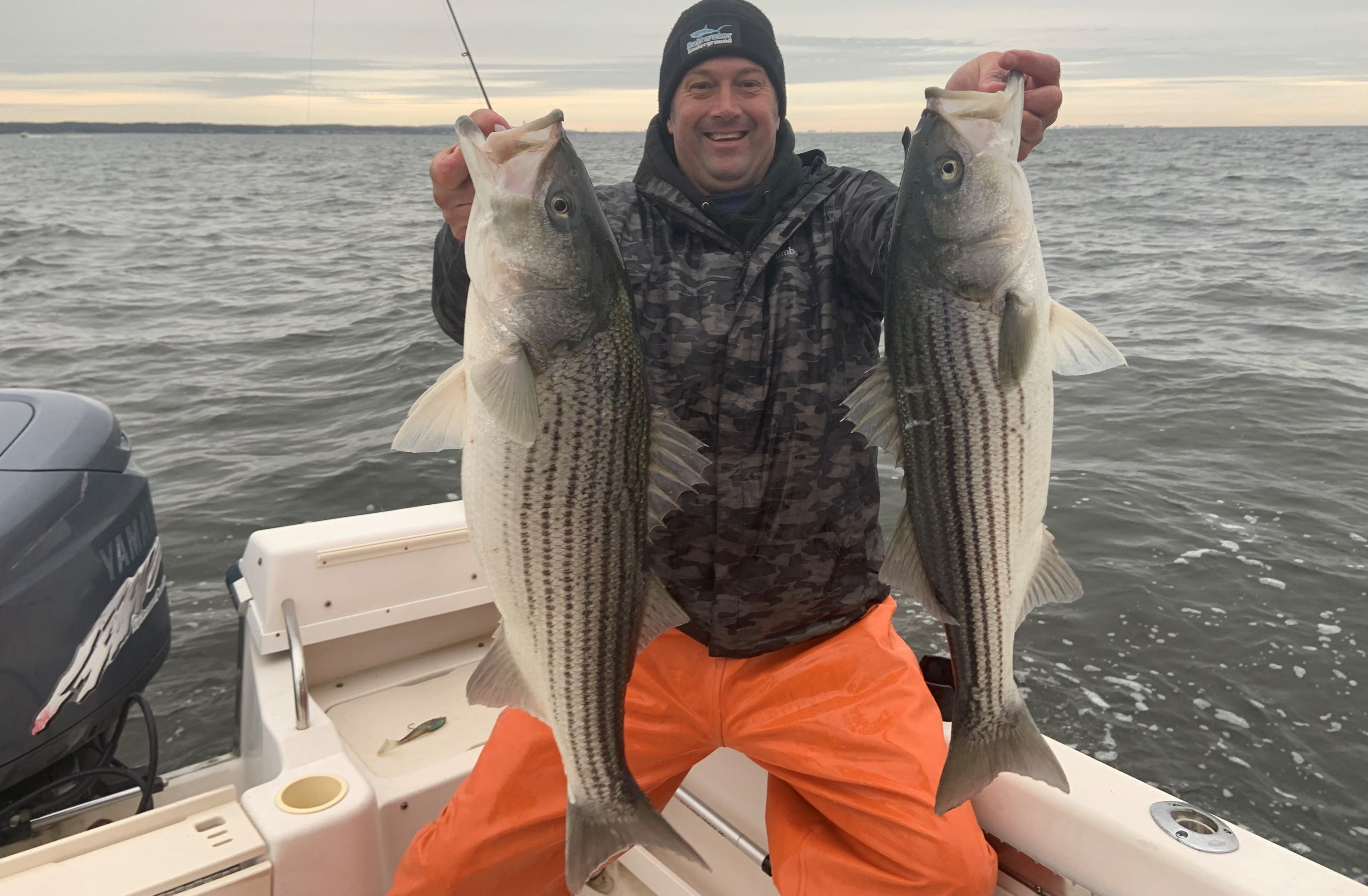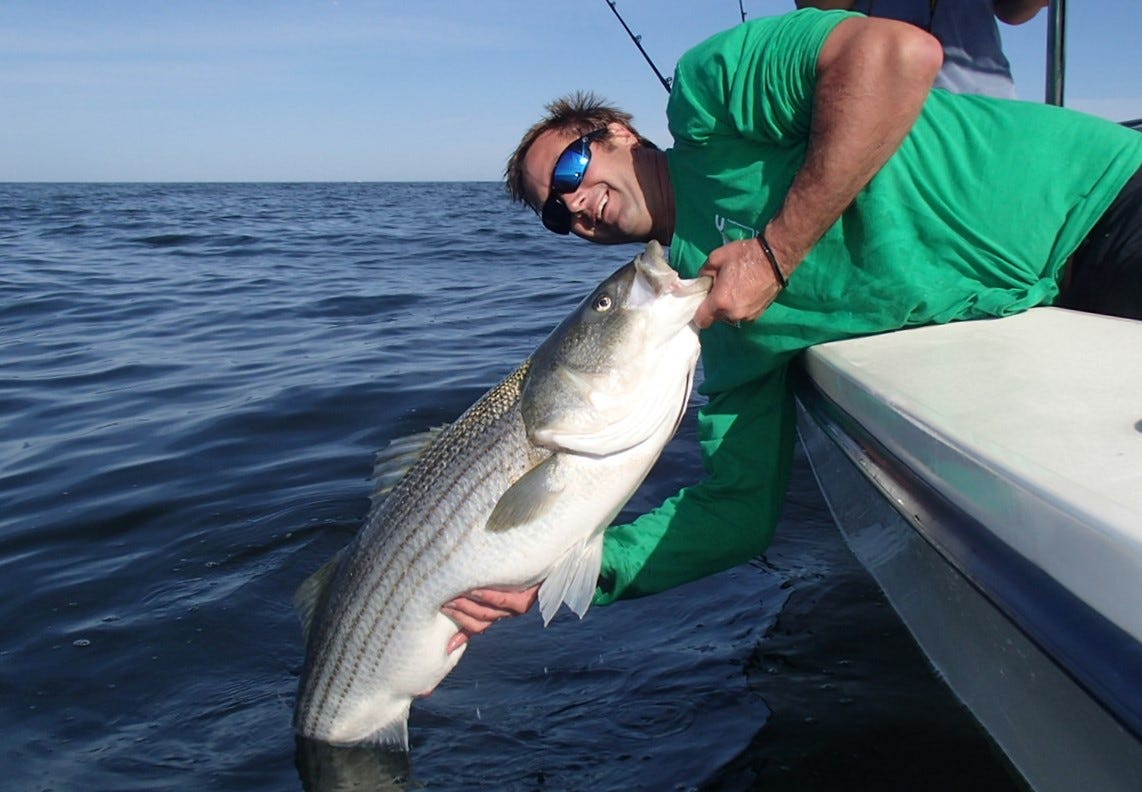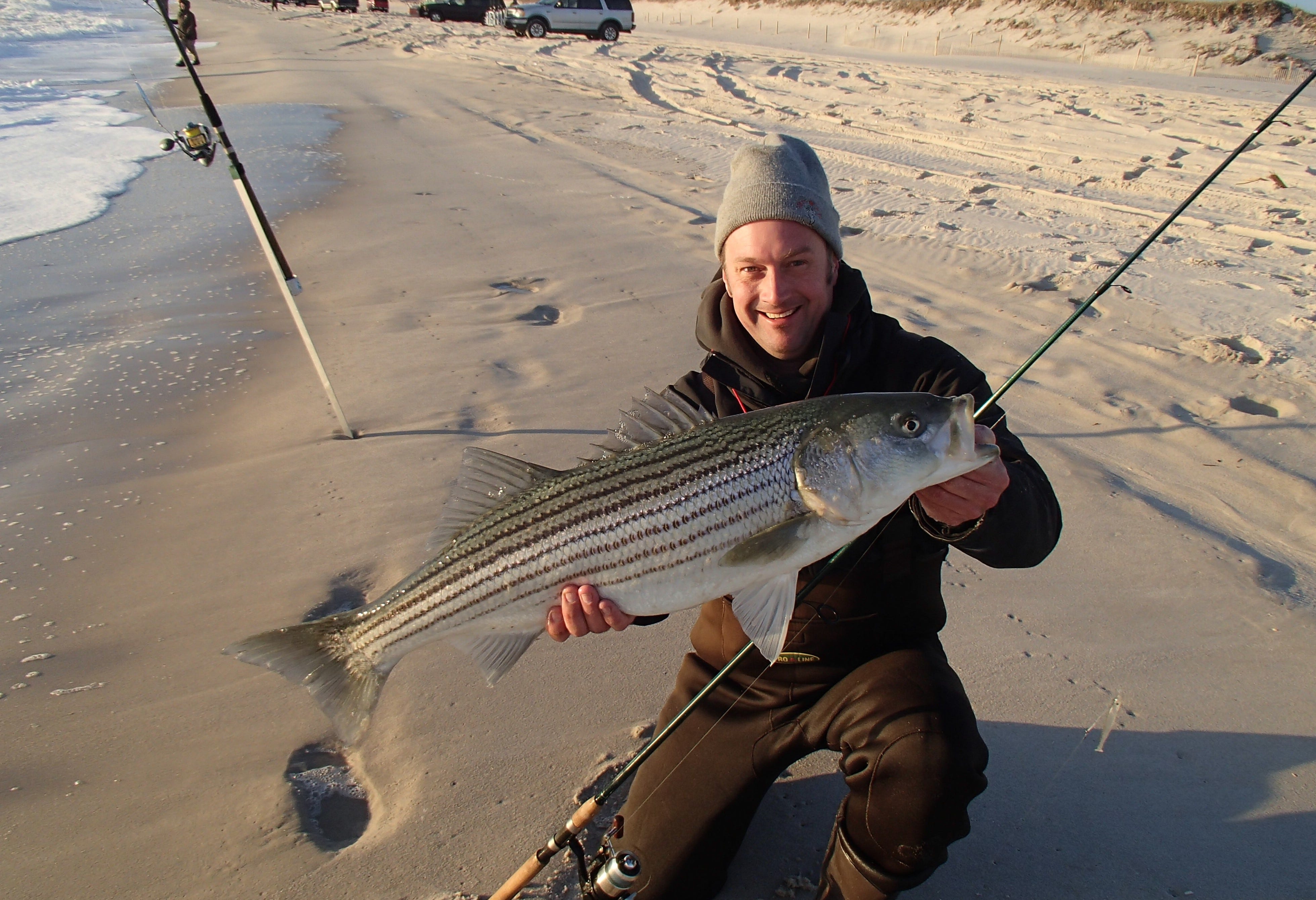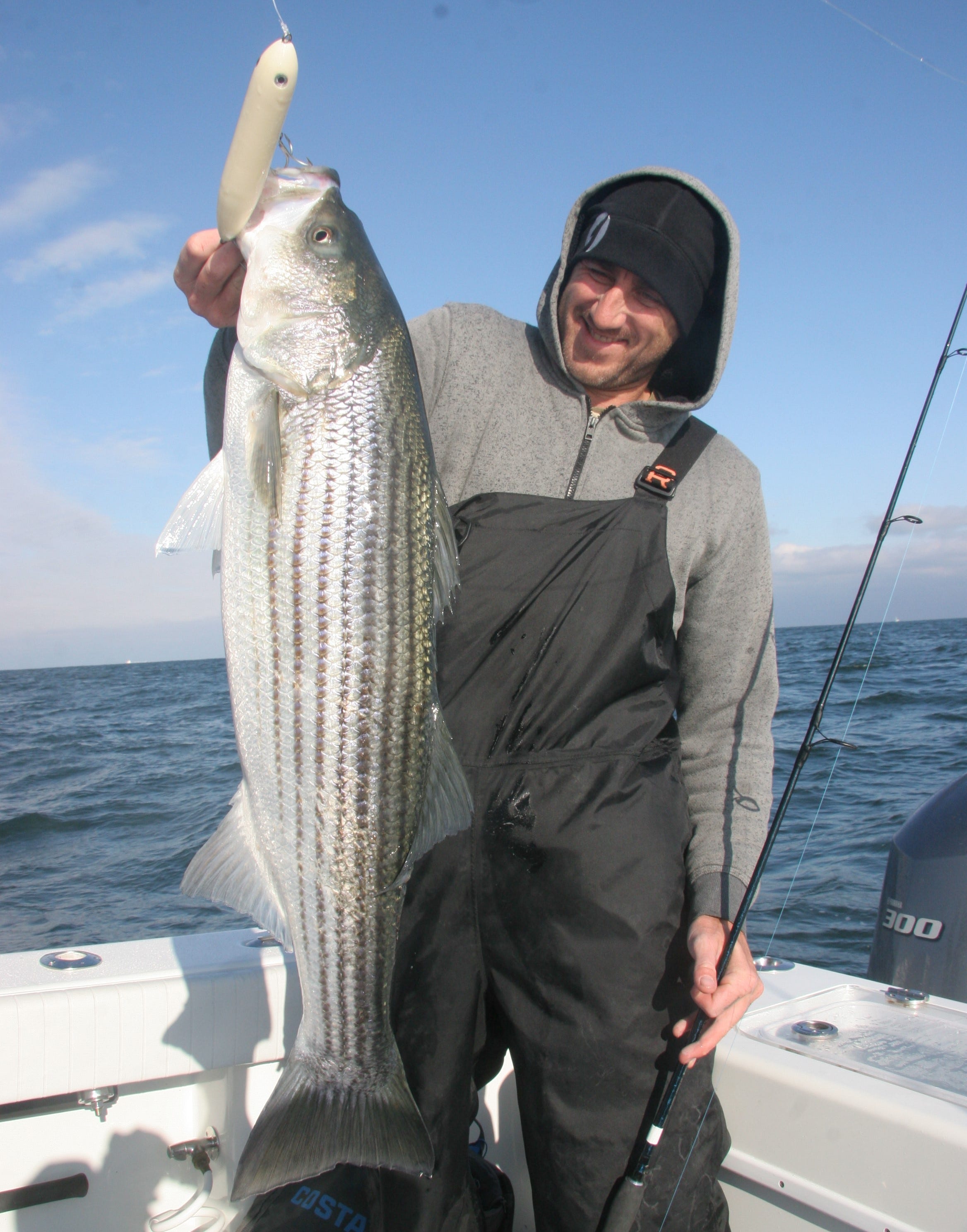- May 12, 2021
4 Proven Strategies for Coastal Striped Bass
The striper bite has heated up along the Atlantic coast. Learn the best techniques for getting in on this exciting fishing action.
Ask any Northeast angler: No other saltwater species attracts more fervor, with a cult-like following, than the striped bass, also knows as rockfish, linesider, striper, or even the affectionate old-school term of “ol’ Pajamas.”
Although striped bass are found in many areas, including Northern California and freshwater impoundments from the South to parts of the West, the coastal striper’s epicenter spans the Northeast and Mid-Atlantic coast from Maine to North Carolina. With average size classes ranging from 5 to 50 pounds on any given day, the species can be hooked on a variety of methods, all certain to raise your adrenaline level.
TROLLING ALONG


Known as the “lazy” way to go about catching striped bass, trolling flat-out produces and allows you to kick back and let the boat and the lines do the work. Make no mistake, though. Trolling successfully takes skill.
General speed for bass trolling ranges between 2.5 and 3 knots, as the fish tend to like a slower presentation where they can lunge with a swoop of their powerful broomtail to make the hit. The perfect imitation of a herring or bunker baitfish is the Bomber CD30. With a wobbling action, this bait dives 25 to 30 feet deep when trolled on a 20- to 30-class conventional reel spooled with 65-pound braided line and a heavy duty 150-pound snap swivel clip. Other main trolling choices are shad bar rigs comprised of 10 to 12 paddle-tail shads or umbrella tube rigs, which allow you to imitate a school of baitfish such as bunker or sand eels moving through the water.
- Troll deep-diving plugs or shad bars 2.5 to 3 knots
- Adjust throttles with outgoing or incoming tide current
- Use braided line for no stretch and maximum hookset force
GO DOWN JIGGING


When bass are marking near the bottom or lower in the water column, it’s time to get down. Drifts over marks while jigging usually result in multiple hookups along the boat rail. Tactics include letting the jig hit bottom, then slowly picking up the rod, then letting it flutter back down. The slow pitch up and subsequent fall is when bass will strike hard as the lure descends back down like an injured baitfish.
The Bomber Saltwater Jig-N-Eel works well in rocky waters such as in Montauk or Block Island. Soft baits like the YUM Money Minnow can be cast close to bridge pilings, stanchions, around inlet areas and along the backwater channels, docks and sod banks. Simple quick twitches will get the Money Minnow to trick up a bass, with a reel-twitch-reel-twitch type of cadence.
- Bass nearly always hit on the drop of the jig, not the upswing
- Jig slowly, not erratic
- Cast as close to structure as possible without snagging
PLUGGING IT IN


Without any doubt, hooking bass from the surf is one of the most gratifying ways to tangle with linesiders, as you can find a 5 pounder or a 50 pounder on your line with your feet planted in the sand.
For decades, the Bomber Long A 16A and 17A models have been the standard – the ultimate surf plug for bass hounds. The Bomber Long Shot now adds to that perfect mix. Back in the day, no surf bag was complete without the Cotton Cordell Red Fin, and that still holds true to this day.
The key with surf bassing is to fish the dark or low light hours. Generally, the rougher surf the better. A rule of thumb is to use light colors like whites and yellows during daylight and go dark with black or blurple color patterns when fishing at night. Cast out and reel in at a slow pace, barely making the plug wobble as it swims under the surface.
For surfcasting, look for deep holes and cuts in the sandbars where bass will lay along the edges. Make pinpointed casts on those ambush points.
- High tide times are best times
- Night fishing, sunup and sundown are prime times
- Work the plug slowly
TOPWATER POPPING


Stripers can be aggressive feeders, especially when nervous bait schools get corralled. That’s when to take it to the top. Surface poppers ignite a frenzied mentality in bass. Ripping a popper across the water surface mimics a baitfish being crashed upon and chased, running for its life.
The key to proper popping with stripers is to slow your retrieve. Cast and really sell that popper as a baitfish that simply can’t get out of the way. Big stripers love to see an injured and incapacitated easy meal.
In the surf, the Cotton Cordell Pencil Popper C09 or C10 models fit the bill as surfcasters pump the tip of the rod to make the pencil popper’s head skitter side to side as the body trails, splashing a wake. When bass are tuned up against backwater sod banks or around bridges, the Rebel Super Pop-R or Creek Chub Knuckle-Head are lights-out offerings. Cast just off the sod bank or bridge piling and rip back in a one-rip-wait-two-rip -wait cadence to blow up the water and create a waterfall of a splash ahead of the popper.
Other productive topwater offerings include the Heddon Super Spook, which is worked in a walk-the-dog type of style. The walk-the-dog presentation with the Super Spook works exceptionally well from the boat as you can really twitch the rod and make the lure dance.
- Cast as close as possible to sod banks as bass use the banks as ambush hideouts
- Slow walk a popper back, don’t rush it
- If a bass hits and misses, slow pop it again and be ready
No matter where you target bass, there is an armada of lures to get you dialed into the bite. Choose your method and execute the motions with precision. In no time, you’ll add a trophy linesider to your resume. And for all intents and purposes, a 50-pound striper is the mark to hit for the trophy. Good luck!
Visit Lurenet.com to stock up on striper lures and for more fishing content.





